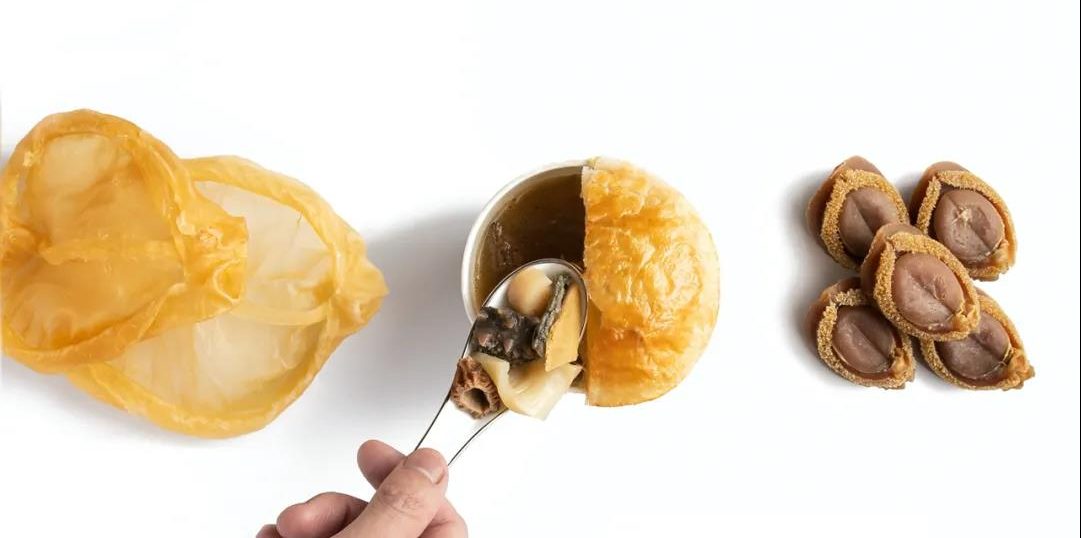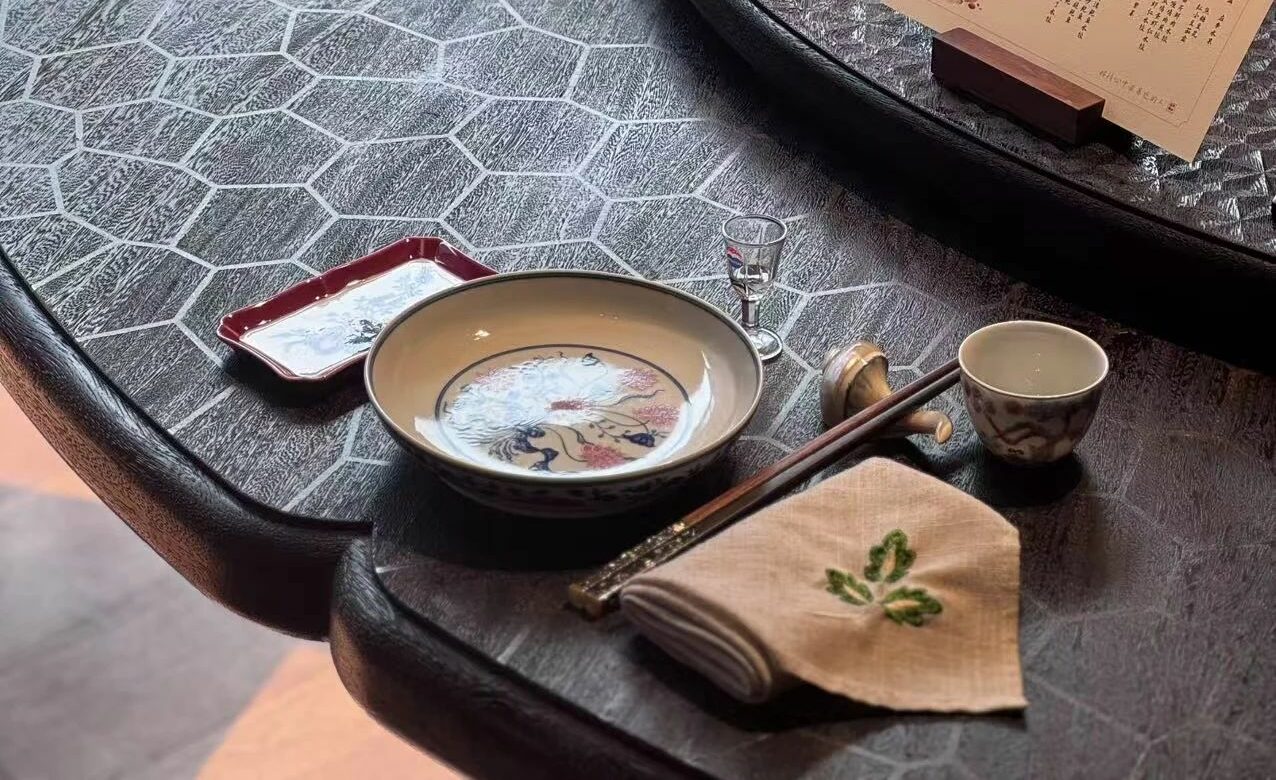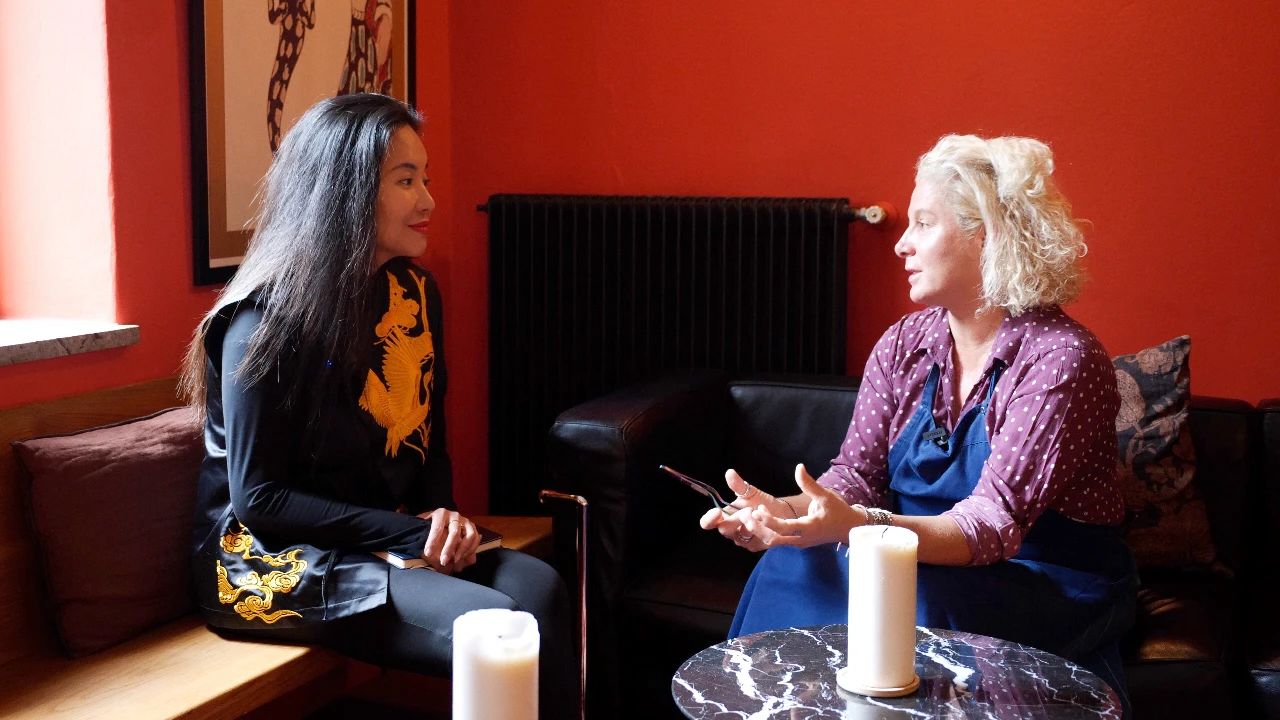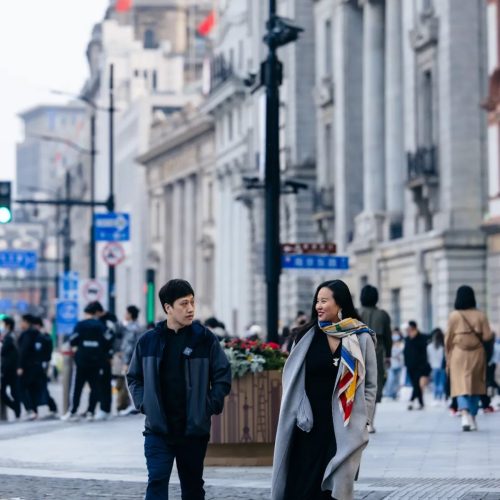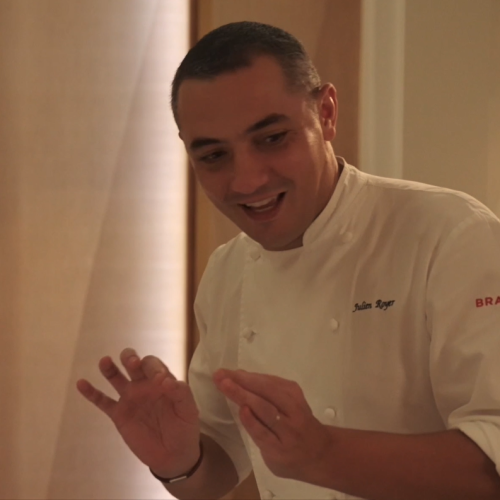Author:
Chinese cuisine taking on Western looks or Western food hits Chinese flavours? Although globally inspired dishes and flavour shave been influencing the industry for several years, consumers today still can’t get enough of these options on restaurant menus.
 the South Fujian-style Buddha Jumps Over the Wall
the South Fujian-style Buddha Jumps Over the Wall
from Ling Long, Beijing
Japanese-style French cuisine could possibly be considered as one of the first fusion cuisine in Asia that a Western cuisine adopted local flavours. Michelin has been popular in Japan since its landing in Tokyo a dozen years ago. Present Taiwan sees its restaurants that specialize orthodox French cuisine embracing the concept of localization, a trend that perhaps best demonstrated by fusion cuisine restaurants such as Raw and Taïrroir.
Meanwhile, you might already know that chef Vicky Cheng at the one-starred Hong Kong Michelin VEA quickly rose to fame in just a few years’ time for his stunning craftsmanship and amazing techniques. In his best-loved dish – Crab and Sea Cucumber, the sea cucumber is barbecued until crispy on the outside and fork-tender inside, underneath which the crab meat base serves to add umami to the whole flavour box. The delicacy is beautifully finished off with a dash of special sauce made with aged Shaoxing yellow wine and chicken grease, giving extra enjoyment and indulgence with a full-fledged profile of taste and texture.
I had a chance to try Vicky’s soft-boiled abalone with foie gras and morels at VEA last year. The appearance is still the classic Pithivier but with whole plump abalone wrapped inside the puff pastry. To make this dish, time control of baking the pastry and soaking the abalone must be very well mastered. Vicky was lucky to have many Cantonese chefs to teach and guide him, but I would say his success draw largely from his own talent and assiduity.
Vicky’s way of cooking is a mature grasp of traditional French flair and skills combined with Cantonese style and methods, which has made himself a name in the arena of nouvelle Chinese cuisine.
 29 head caramel centred Japanese dried Abalone Pirthivier @VEA INS
29 head caramel centred Japanese dried Abalone Pirthivier @VEA INS

Chef of VEA, Vicky Cheng(upper middle)
with Forum Restaurant’s founder Yeung Koon (lower middle), executive chef Adam Wong(left)
and dim sum supervisor Oscar Lam(right)
@VEA INS
Now the tides have arrived at the shores of China.
Shanghai currently nestles two restaurants that specialize in Innovative Modern Chinese cuisine. One of them is Bo Shanghai, owned by a fervent Hong Kong chef named Alvin Leung and has picked a star from Michelin. Its chef DeAille Tam and her other half Simon Wong went on to open Obscura on their own in a similarly nouvelle vein.

Chefs of Obscura, Shanghai
Deallie Tam and Simon Wong

Their classic dish Hunan Bacon & Pepper, at Obscura the beef is done in the way of cured pork in Hunan province. Pan-fried with Hunan screw peppers and smoked radish chunks, and garnished with Italian pickled red peppers, the dish is textured in flavours and chewy to bite. Sidestepping the rules and frames of the eight great cuisines, Tam and Wong now feel comfortable with more eclectic ideas just like duck takes to water. There used to be over-the-top complexity in their dishes but now they have certainly known what it means by less is more, with tables at Obscura always fully booked. With their professional background and acclaimed skills, it sure won’t be much of a problem to obtain another Michelin star.
Obscura currently offers 11 seats and only opens five days a week, which means 55 diners for a whole week. This has made it one of the most difficult to book restaurants in Shanghai. After all, who doesn’t love a mouthful of the long-familiar Chinese taste with methodical Western techniques and culinary aesthetics.
On the other hand, Lunar’s chef Johnston Teo, a Singaporean with Malaysian roots, also specializes in nouvelle Chinese cuisine. He used to work as a R&D chef at the three-starred Odette restaurant in Singapore and had previously been a chef at The Pine in Shanghai, where he mainly focused on modern Asian dishes with strong Nanyang (南洋; otherwise known as Southeast Asia) impression. After staying in China for some time, he has now imbedded personal experience into a more succinct yet impactful presentation of modern Chinese cuisine. With his talented palate capable of memorizing taste elements and essentials, Teo could just inarguably become another rising star.
Yongfoo Elite, another long-established two-starred Michelin in Shanghai, welcomes the recent addition of its R&D chef Ruomi Gan, who had previously studied literature in Portugal and has a background studying in a French cooking school and working internship at Mirazur in Menton, France. Again, French techniques are integrated into the stylish Shanghai cuisine, with the expected brilliant cold dishes. However, the decision to trim down one-third of the original menu and redesign a tasting menu all over again was rather audacious. True, I was impressed by its ingenious dessert – Wuliangye Liquor Ice Cream, but one could tell that the menu was still fumbling through fancy concepts and new fangled ideas.

Codfish smoked by Keemun black tea

I asked Ruomi, “Do you worry about losing the star with the menu changing so drastically?” She replied with a difficult smile. Although the market holds mixed feelings toward Yongfoo Elite’s cuisines, I must acknowledge the courage it takes for an established Shanghai restaurant to make changes. Had it not been for the outbreak of the pandemic, Yongfoo Elite was planning on launching an internship program where foreign young chefs could get to learn the nuances of local Shanghai dishes.
In 2019, the American three-starred chef Christopher Kostow opened Ensue, a 50 million yuan venture in Shenzhen. The operation of the restaurant is in good hands of Miles Pundsack-Poe, a Canadian chef from The Restaurant at Meadowood, who incorporates Chaoshan flavours among other ingredients encountered during his visits in various places in China into his fascinating New NAPA cuisine recipes, all traditional Chaoshan fare but with a French flourish.

Head Chef of Ensue, Miles Pundsack-Poe
Deep diving into local ingredients and successfully translating them into culinary treasures certainly won’t be an easy thing, but Miles, a foreign young chef who has been in China for only two years, simply did it. With his outstanding gift for food aesthetics and insistence on using farm-to-table local ingredients, his dainty dishes exude an air of elegance and subtlety that shouldn’t be coming from such a tender age. Mile has made me think of the words from a Japanese three-starred Michelin chef – Hiroyuki Kanda, that “True taste lies in simplicity”. What I especially appreciate is that he brings a sense of delicacy and minimalism he learnt from the Chinese cuisine through Western approaches. After all, he is a natural.
Nowadays China has seen an emerging generation of young chefs flourishing for the integration of Chinese and Western cuisine. This year, Ling Long in Beijing also got a place on the Michelin Plate recommendations. Chef Jason Liu is from Taiwan and received culinary training to become a professional cook since the age of 14. He worked in 1930, a famous French restaurant in Taipei, and Bistro 3 in Beijing. “Bocuse Jumps Over the Wall”, an interesting combination of French pastry soup and Fujian cuisine Buddha Jumps Over the Wall (also known as Buddha’s Temptation, 佛跳墙) is a recent creation of Liu. This traditional delicacy uses aged fatty chicken and pork bones to make the soup base, and then fish maw, abalone, sea cucumber and morels are processed separately to make the South Fujian-style Buddha Jumps Over the Wall. Pomelo peels in the clear-broth soup help reduce the buttery impact from the puff pastry. An essential element of this dish is the precise control of temperature in the oven to heat up the pastry and the soup inside.

Ling Long, Beijing, chef Jason Hesen LIU
I asked him how he would define his dishes, “Chinese French or French Chinese?” He replied with a meaningful smile: “Chinese French, for now. Western restaurants in Beijing are in no place to compare with those of in Shanghai. It is a lonely, niche market.” Liu is now practicing and harnessing his skills in preparation for earning Michelin stars.
In the international arena, Chang Liu, a Yangzhou native in Milan, has gained my respect. He was the first Chinese to work at the Noma restaurant in Denmark and had spent three years in Tokuyoshi, a Michelin-starred restaurant in Milan, where he finally became the sous chef. He later opened a restaurant called Serica, which means “Silk Road” in Chinese.
As the name goes, Liu wants to dive in with the trending fusion cuisines. And he has valid reasons to do so. Rooted in Huaiyang cuisine (hailed as the cuisine served in China’ state banquets), Liu had experience as an exchange student in Italy, practicing Nordic cuisine in an internship and later followed a Japanese chef to refine his techniques. Compared with other fusion cuisine chefs, Liu has a solid foundation on both sides, with an eye to the flavours satiated by both Chinese and Italians.


Of the many masterpieces by Liu, spaghetti with Chinese mitten crab and ginger sauce is my absolute favourite. The taste is practically spicy and delicious. The Shaoxing wine (also Huangjiu, millet wine) was an awesome idea – it added completeness to the flavours, but more of a homage to the rich Chinese alcohol culture in Italy. This one is loved by many gourmets in Milan, so I guess food is really a universal language that people from any part of the world can relate to and enjoy.
I have seen Western chefs making similar dishes. But perhaps they did not fully understand the beauty of the ingredients, and so the cooking and presentation were not impressive enough to strike me as anything inviting. Liu may still be on the route of self-exploration, as he recently left Serica and joined Mu, a Chinese food group in Italy, through which move I hope he can continue to hone on his appealing cuisine.
Am I being too old-fashioned or what, I always like to talk with chefs and hear them define their own cooking? Because I truly hope that the person who cooks for me knows what kind of food he serves to the diners.
“Is Chinese food a subject or an adjective? Where is the focus?” Fusion cuisine sounds a bit confusing because it is mainly using Chinese ingredients and flavours based on Western techniques, at least for now. Let’s hope these young chefs will find the answer for us with their globally inspired dishes and flavours.
Following the once-popular molecular gastronomy and the still-in-vogue Nordic cuisine, the rise of fusion dishes that mash-up international flavours with Chinese classics may be here to make the next menu wave.
This article is reproduced from the 《United Daily News》 on January 1, 2021

Reprint or other cooperation matters
Please contact WeChat account:tastytrip2020
Welcome to follow us
Weibo:TastyTrip
Instagram:_tastytrip_


